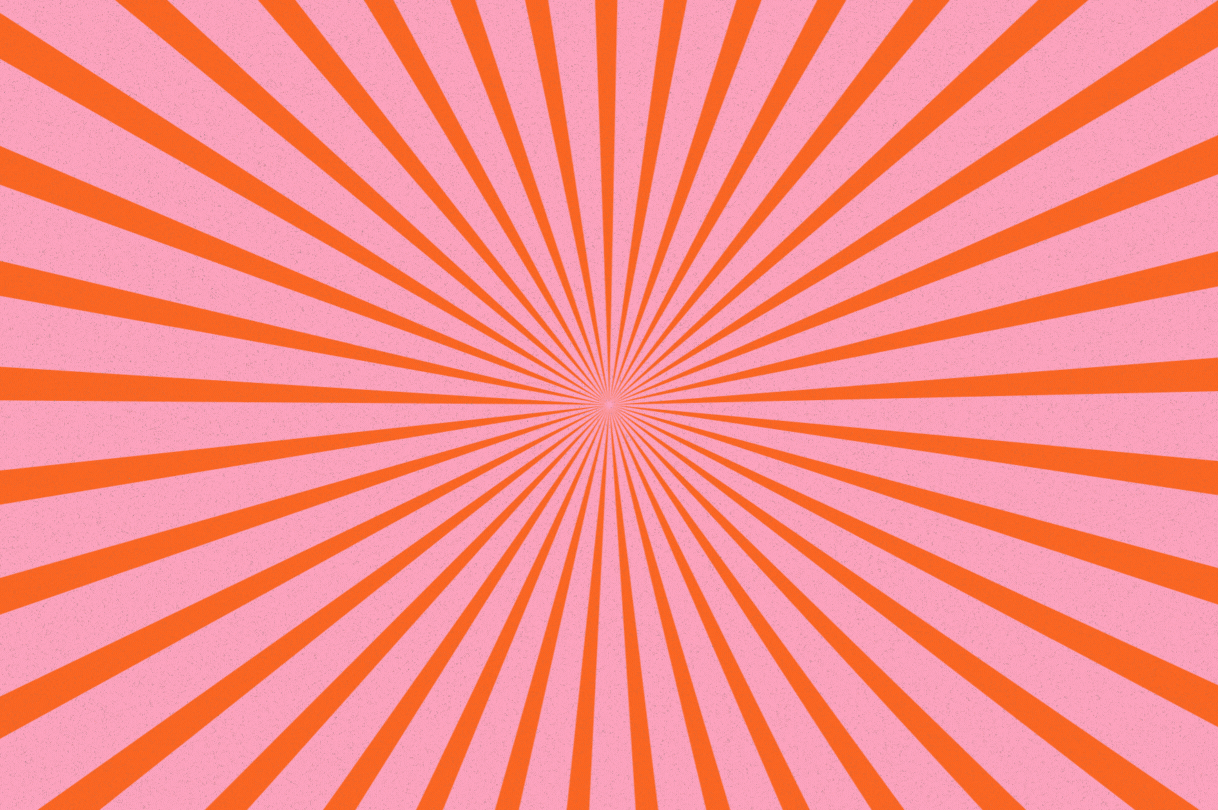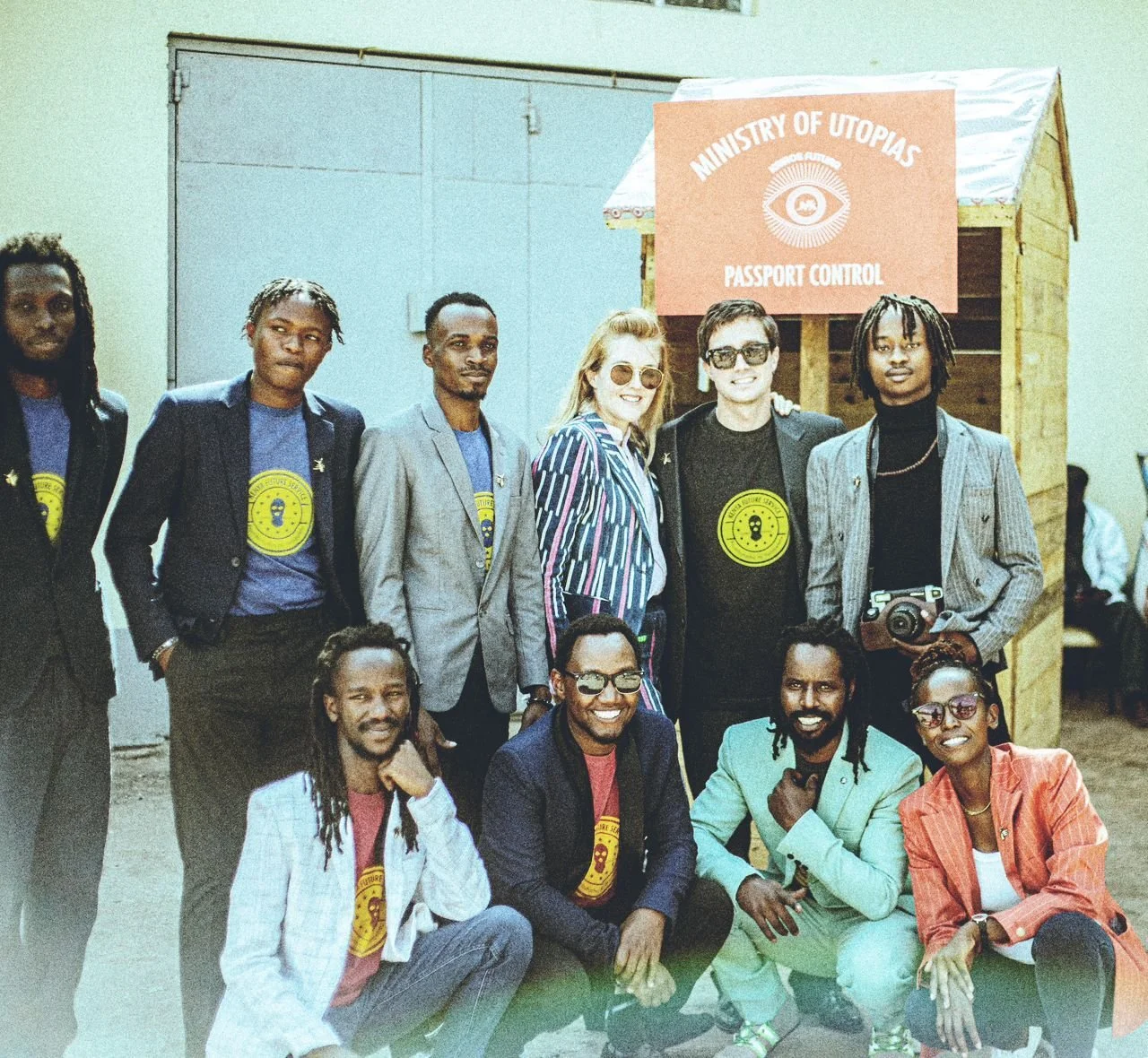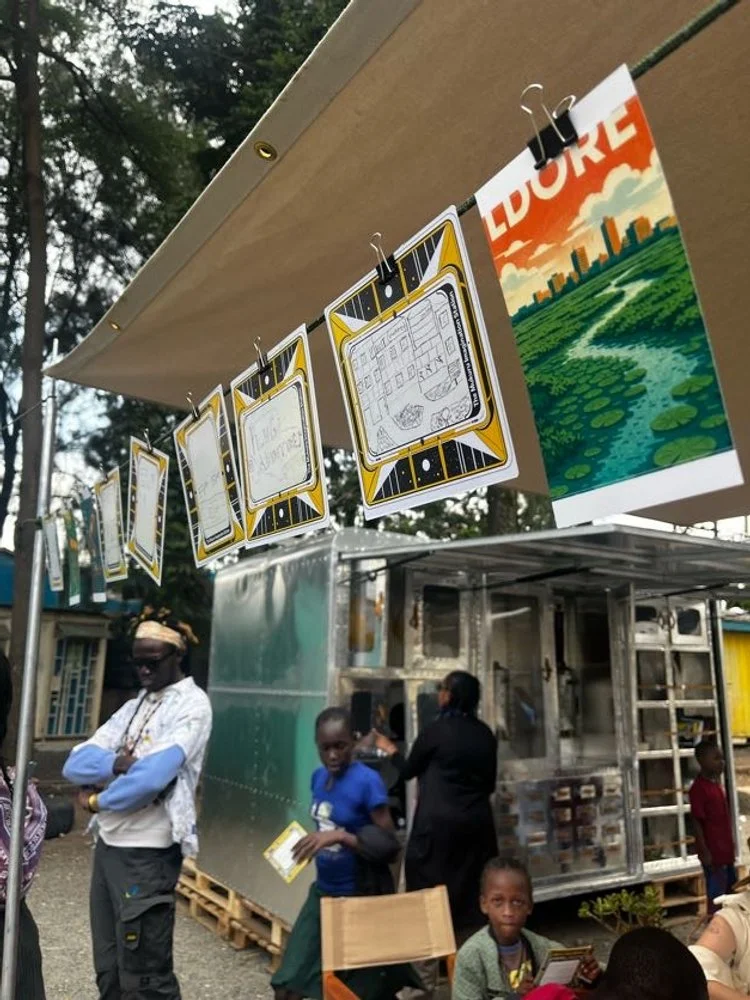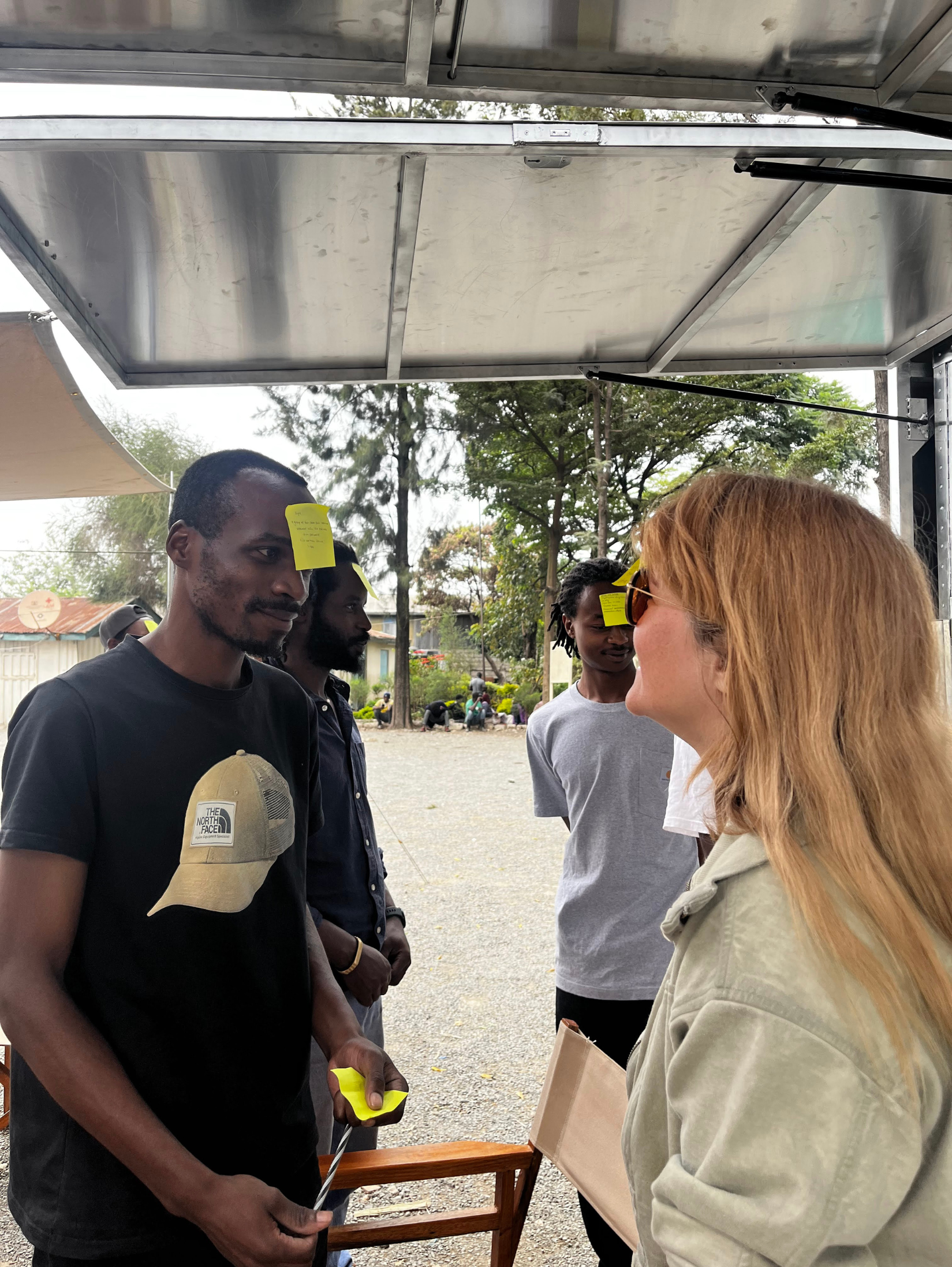What does it look like when imagination becomes infrastructure? Enter The Imagination Station – a solar-powered, off-grid mobile creative lab designed by Nairobi’s visionary collective, Kairos Futura. Launched at the TED Countdown Summit 2025, the Station is now journeying across Kenya, inviting communities to dream boldly about the future, reimagine their relationship with nature, and experiment with the tools of speculative creativity.
The Station is part traveling atelier, part speculative playground. It offers workshops, storytelling games, design tools, and open-ended prompts to help participants think beyond crisis and toward possibility. From Wild Future Tarot and AI-powered storytelling to Postcards to the Future and community-led workshops, each stop becomes a portal for collective dreaming – especially in regions with limited access to creative resources.
We at Fine Acts were proud to consult TED Countdown on its open-call search for a climate-focused public art commission in Nairobi, ahead of the Countdown Summit in June. We wrote the brief, built a shortlist through our network, and served on the jury – ultimately helping select the brilliant Kairos Futura and their Imagination Station. We’re incredibly grateful to have been part of this process – and even more excited for what’s ahead.
In this interview, we speak with the team behind Kairos Futura about the thinking, surprises, and stories emerging from the road so far – and why they believe that imagination, when applied, is nothing short of a survival tool.
Fine Acts: In a world where many people are stuck in survival mode, how do you see imagination functioning as a necessity rather than a luxury?
Kairos Futura: Creativity is our birthright and our natural state of being. We are inherently curious beings, and it is our subpar education systems that damage our imaginations. Hope and fear are products of our imagination. Goals are pure imagination. Imagination isn't a luxury. It's a primary human survival tool.
FA: Many communities today face what some call a crisis of imagination – a kind of collective aphantasia that makes it hard to see beyond the immediate. Through what tools and approaches does the Imagination Station help people move from a sense of fatalism to a sense of possibility?
KF: Wonder, curiosity, and awe open our imaginations and allow us to build new neural pathways between seemingly disconnected ideas. One of the main reasons we wanted to take the Imagination Station to wild places is because we want to trigger curiosity and wonder in people, and spending time in nature is an effective way to do that.
We also do a lot of scenario-based storytelling to help people develop their imaginative skills. We might start out with a storytelling container such as: it's the year 2299, and wasting water is now the worst crime in your community. Water is worshipped and protected as the sacred nectar of life. How would your house look if water was the most valuable thing in existence? These prompts are excellent entry points because humans naturally learn through stories and play. From there, we let people explore their ideas and then physically prototype them in whatever locally available materials and around different themes and disciplines.
“Hope and fear are products of our imagination. Goals are pure imagination. Imagination isn’t a luxury. It’s a primary human survival tool.”
FA: Climate change in particular can often feel abstract or overwhelming, especially in communities already facing other pressing challenges. How does the Imagination Station make climate issues feel personal – and climate action urgent but doable?
KF: Climate action feels unachievable when we focus on all the things we can't control. Imaginative, local futuring is all about creating possibilities with what we have available and the realities in our communities. For example, you might not be able to change seasonal flooding in your village, but how might you start to design a house that stands above the high-water mark? And what might that look like if you had to build it with local materials? We don't give answers; we ask participants questions, give them access to creative resources and mentorship. It's exciting to see the ideas people develop. Humans are storytelling machines, and once we frame a story from a new perspective, new possibilities can open up all around us.
FA: The Imagination Station will travel into communities rather than asking people to come to it. How do you think about access, dignity, and inclusion through that choice to meet people where they are?
KF: So many people are being excluded from developing new visions for the future because they lack access to educational opportunities, networking, and a platform for sharing their ideas and projects. We're constantly amazed by the amount of demand for knowledge and skills from young Kenyans we experience through our projects at Kairos Futura's atelier in Nairobi. We have a generation of voracious learners here, eager to try new things and desperately underserved by the existing educational institutions.
Transportation costs can be prohibitively expensive for many young people here, and even free workshops come with hidden costs if they mean leaving your immediate community. Offering free workshops, materials, and project development right in someone's neighborhood takes away this barrier–a barrier that would be insurmountable for a massive percentage of creative minds in Kenya.
“Climate action feels unachievable when we focus on all the things we can’t control. Imaginative, local futuring is all about creating possibilities with what we have available and the realities in our communities. ”
FA: We often think of imagination as an individual act – but your work emphasizes the collective. What does collective dreaming look like in practice, especially across groups who might have very different experiences of place, identity, and lived experience?
KF: During many of our Kairos workshops, we do this ‘hopes and fears for the future’ activity. First, people write their hopes, then their fears for the future on a post-it note, and then they walk around with it stuck to their head and shake hands with people if they agree with what they've written. The amazing thing is, almost everyone has similar hopes and fears. As we said earlier, hope and fear are acts of pure imagination. Those aren't things that exist. But we see in this activity how similar our collective imaginations are about the best and worst possible outcomes for the future.
The idea that a mother in a rural part of Kenya doesn't have similar hopes and fears for the future to a mother in rural Oklahoma isn't true. In fact, if we did this exercise right now, we would be willing to bet that it would be remarkable how similar their concerns would be, and their aspirations. Fear of poverty, scarcity, and ill health; hopes for their children, education, and their quality of life. Probably the biggest differences we see when we do this activity are between rural vs. urban environments, but even then people's aspirations are usually quite similar. So we do actually have a collective imagination of the future already when we frame it through the lens of hopes and fears.
Nations and religions are other forms of collective imagination. There is no such thing as Kenya in the natural world. There is no such thing as Christianity except in the landscape of our collective imaginations. We would argue that collective imagination is the single most important organizing factor for humans. It is the building block for communities to exist. Collective unifying narratives are the only thing that has allowed humans to organize at scale and are incredible examples of collective imagination.
“So many people are being excluded from developing new visions for the future because they lack access to educational opportunities, networking, and a platform for sharing their ideas and projects. ”
FA: Now that the Imagination Station has been on the ground, what’s something surprising you've learned or encountered that you didn’t anticipate during planning?
KF: One of the most beautiful things that we weren’t sure about beforehand is the organic engagement with the elements of the Imagination Station. Children and young people come everyday, wanting to draw, use the microscope or the 3d printer, or read books from the Station’s library. The amount of interest in citizen science and food sovereignty also surprised us. We will add more resources on sustainable farming innovation, and we’re purchasing a better quality microscope for water and soil tests.
“Humans are storytelling machines, and once we frame a story from a new perspective, new possibilities can open up all around us.”
FA: Have you noticed any shifts in participants' confidence or worldviews after engaging with the Station?
KF: Applied imagination is unfortunately rarely taught in schools anywhere in the world and so people don’t develop their abilities to use their imagination as a critical problem solving tool. Young people in Mukuru are brimming with ideas and when we give them a framework for developing them into actionable experiences, they become motivated and increasingly confident about their ability to try new things.
“There is no such thing as Kenya in the natural world. There is no such thing as Christianity except in the landscape of our collective imaginations. We would argue that collective imagination is the single most important organizing factor for humans. It is the building block for communities to exist.”
FA: What kinds of futures are young people envisioning most often? Are there recurring themes that stand out?
KF: In Mukuru, trash is a big issue, so futures that have more regenerative solutions around waste were a big topic. Air and water pollution were also issues that came up frequently. Many people remember there was a time when Mukuru still had a forest and marshes. Now, there is almost nothing, so climate collapse, grief, and wanting to find ways to reverse it and build resilience came up many times.
FA: In places where hardship is present, how has imagination shown up as a form of healing or empowerment?
KF: Imagination is the first step towards transformation. Without imagination, how could we have change? Change is when we envision something we want to be different and then take action to make it happen. To us, particularly applied imagination feels like a superpower when you learn to use it. You create a vision, identify a facet of that vision you want to work on, narrow it down to one manageable but exciting first step, and then do it in real life. Knowing you can change your community and your own life this way is both healing and empowering.
“Applied imagination feels like a superpower when you learn to use it.”
FA: Has there been a particular participant or story that has deeply stayed with you – one that truly captures what the Imagination Station is all about?
KF: There is a workshop participant named Muli. He has 8 ideas for every question we ask him. He intuitively understood the idea of worldbuilding and imaginative community futuring. He is creating a super hero trash collecting crew called the Carbon Squad. Trash pickers in Nairobi work in terrible conditions and usually have one set of gloves between 10 or even 20 people and not enough protective clothing. We’re supporting him to create a cool visual identity for 10 of them that also incorporates protective wear into their outfits. His goal is to highlight and celebrate these people who do an essential but often totally unappreciated job. Once he completes this project, if he wants to continue, we’ll help him develop it further to include more trashpickers and apply for a grant so he can expand it. He is the kind of visionary leader, with few resources or opportunities in communities across Kenya, who we want to empower to imagine and create the future.
FA: Once the Station moves on from a location, what would be left behind? How do you think about continuity, legacy, and ensuring that the spark of imagination doesn’t fade once you’ve gone?
KF: Mentoring and additional workshops are two ways we believe we will keep having an impact. We also plan to give previous participants opportunities to join in future Imagination Station expeditions so they can build on their initial experience and potentially mentor other young people as their creative skills grow. We're also developing an Imagination Station Kiosk, which would be a micro-design studio with essential design supplies that we want to leave for Imagination Station participants so that they have access to basic tools and supplies to keep developing their ideas. As we will continue to work with the former participants, if they need more supplies, they'll be able to let us know. If the micro-studio concept is successful, we'll help participants fundraise to keep having supplies and tools at their kiosks and the opportunity to host visiting creatives in their communities for workshops.
“Rewilding invites us to imagine that our most exciting future might be in a world where we live deeply connected to our ecology and align ourselves with the cycles and patterns that exist in nature. ”
FA: You describe the Imagination Station as a tool for envisioning “rewilded futures.” What does rewilding mean to you – culturally, politically, and ecologically?
KF: Rewilding is about reconnecting ourselves, our stories, and our cultures to our ecology and our landscape. Most people live in a cultural narrative that values dominating nature rather than being part of it, and that has created systems that lead to ecological collapse as well as anxiety and depression for billions of people living in built environments with little connection to the natural world.
Rewilding invites us to imagine that our most exciting future might be in a world where we live deeply connected to our ecology and align ourselves with the cycles and patterns that exist in nature. We do not need to wall ourselves off from the natural world. We do not need to create systems that fight natural patterns and rhythms. We can align ourselves with our ecosystems, live in balance and awareness of the other species, and create a better quality of life simply by stopping this needless war with nature.
Rewilding is, in many ways, the opposite of the space fantasy future myth that often dominates cultural narratives about the coming five hundred years. That fantasy grew out of our domination over and rejection of our role in our environments. Dominating space is the next step in that cultural myth of dominating nature. If we transform our cultural myth to one where the natural world dominates and we participate in and support the ecology we co-exist with, our myths of the future will naturally transform. There is a reason people want to go to space, and it's mostly storytelling and status anxiety. If rewilding dominated the thinking of the wealthy and powerful, they would be busy looking at swamp micro-organisms under their portable microscopes, knee-deep in mud, instead of paying half a million dollars to have motion sickness for 45 minutes in an uncomfortable spacecraft.
FA: If the Imagination Station succeeds in what it sets out to do – what kind of Kenya, or world, do you imagine it helping to create?
KF: We imagine a Kenya where every place you visit is different because every landscape is different, the local materials are place-specific, and the people are diverse… We want a future where people feel deeply connected to the place they live, and we want to help them grow their vision into tangible action so that they can experience a sense of agency and possibility when they think of themselves, their culture, and future generations.
“We want a future where people feel deeply connected to the place they live, and we want to help them grow their vision into tangible action.”







